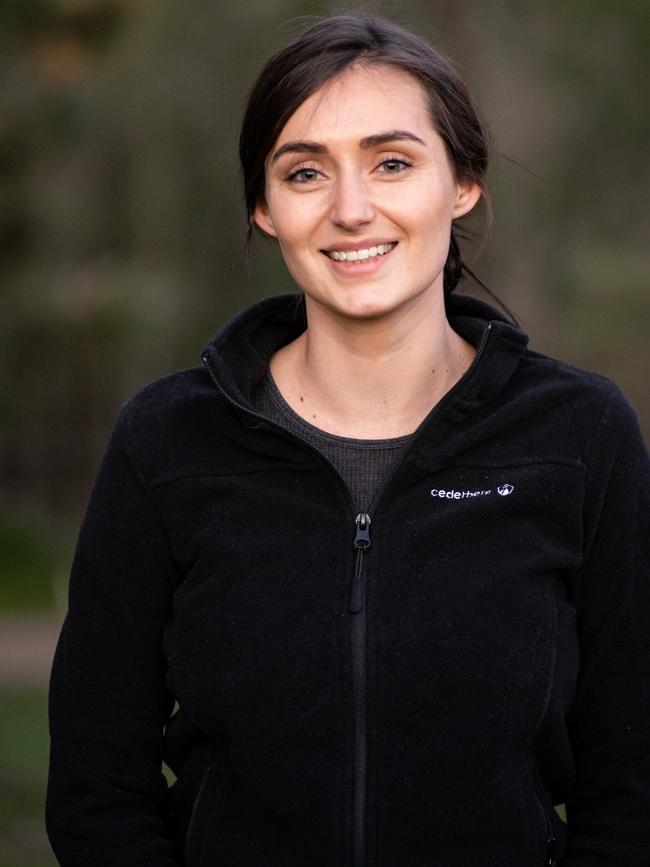University of Newcastle koala researchers find new koala population during drone survey
A landmark survey of koala numbers, using thermal drones, has uncovered a previously unknown population of marsupials thriving next to Newcastle. But the amount within fire-ravaged areas remain struggling.

Newcastle
Don't miss out on the headlines from Newcastle. Followed categories will be added to My News.
A hidden koala population has been uncovered thriving on the doorstep of the state’s second largest city during a landmark survey using drones and thermal imaging equipment.
But the discovery of almost 300 koalas in the Sugarloaf State Conversation Area, on the western outskirts of Newcastle, has been tempered with estimates that some other populations have been decimated by up to two-thirds by the 2020 Black Summer bushfires.
The study, funded by WWF-Australia and led by University of Newcastle, estimated a population of 4357 koalas across 67,300ha of bushland across 208 sites between the Hunter and Crescent Head.
In what has been lauded as “the largest and most accurate peer-reviewed koala survey to date”, researchers used thermal drones with spotlight verification and statistical modelling to estimate the numbers of the marsupials.
The surprising and exciting discovery of the population at Sugarloaf, estimated to be more than 290 koalas, was the highlight of the groundbreaking survey.

Researchers decided to check the Sugarloaf area after some koala sightings in the area, including from local resident and Gamilaraay and Wiradjuri man, Daryn McKenny, who began seeing the animals about five years ago before spending hundreds of hours capturing them on camera.
“The koala population at Sugarloaf seems to be a bit of a secret even though it’s in close proximity to Newcastle,” University of Newcastle’s Dr Ryan Witt said.

He later added: “This population has flown under the radar – proving that koalas can survive, and even thrive, in peri-urban areas. These fringe habitats need protection and monitoring just as much as pristine reserves.”
Using thermal drones with spotlights for night surveys, the team could find a koala in less than two minutes in areas which previously took hours of searching on-foot.
Shelby Ryan, a PhD candidate from the University of Newcastle, said they looked for a tiny yellow dot on-screen, which showed potential body heat in that area.
“We navigate the drone towards heat spots and switch on the spotlight to see in real-time whether it’s a koala or another animal,” Ms Ryan said.

While the use of heat detecting drones to find wildlife was not new, combining this method with spotlights to help scientists visually distinguish animals was unique to this koala study.
“This method is much more reliable than using AI, which can mistake possums or other animals for koalas,” Ms Ryan said.
The team surveyed a sample area of about ten per cent of the seven national parks studied.
Multiple surveys were taken across different nights to improve accuracy of the koala counts.
A robust statistical model was developed to predict koala numbers across the entire national park allowing data to be captured on a much larger scale.
“Our modelling reflects real-world environmental variation and not just a flat average. We considered factors like the terrain slope, tree coverage and height, and soil moisture to accurately represent koala abundance,” Shelby said.

Of the seven national parks surveyed, Maria National Park near Crescent Head had the greatest density of koalas, with 521 koalas predicted in 3,350 hectares.
Dr Witt cautioned that density does not necessarily point to a thriving koala population though.
“We also surveyed two areas that were burnt in the 2019-20 Black Summer bushfires – Lake Innes[near Port Macquarie] and Khappinghat [near Taree],” he said.
“We found the abundance of koalas at fire-affected sites was about two-thirds less than non-affected sites.”
It was hoped the groundbreaking surveys could be extended to other parts of the state.



